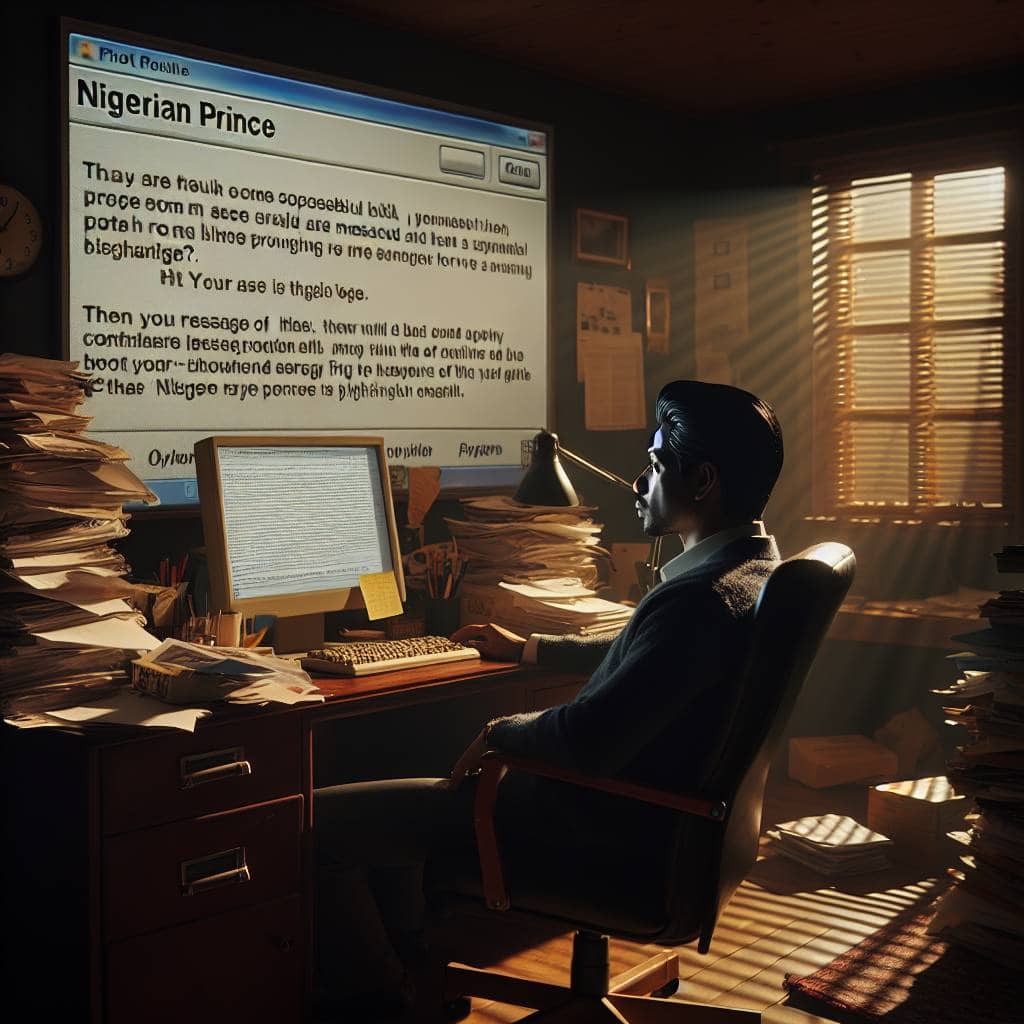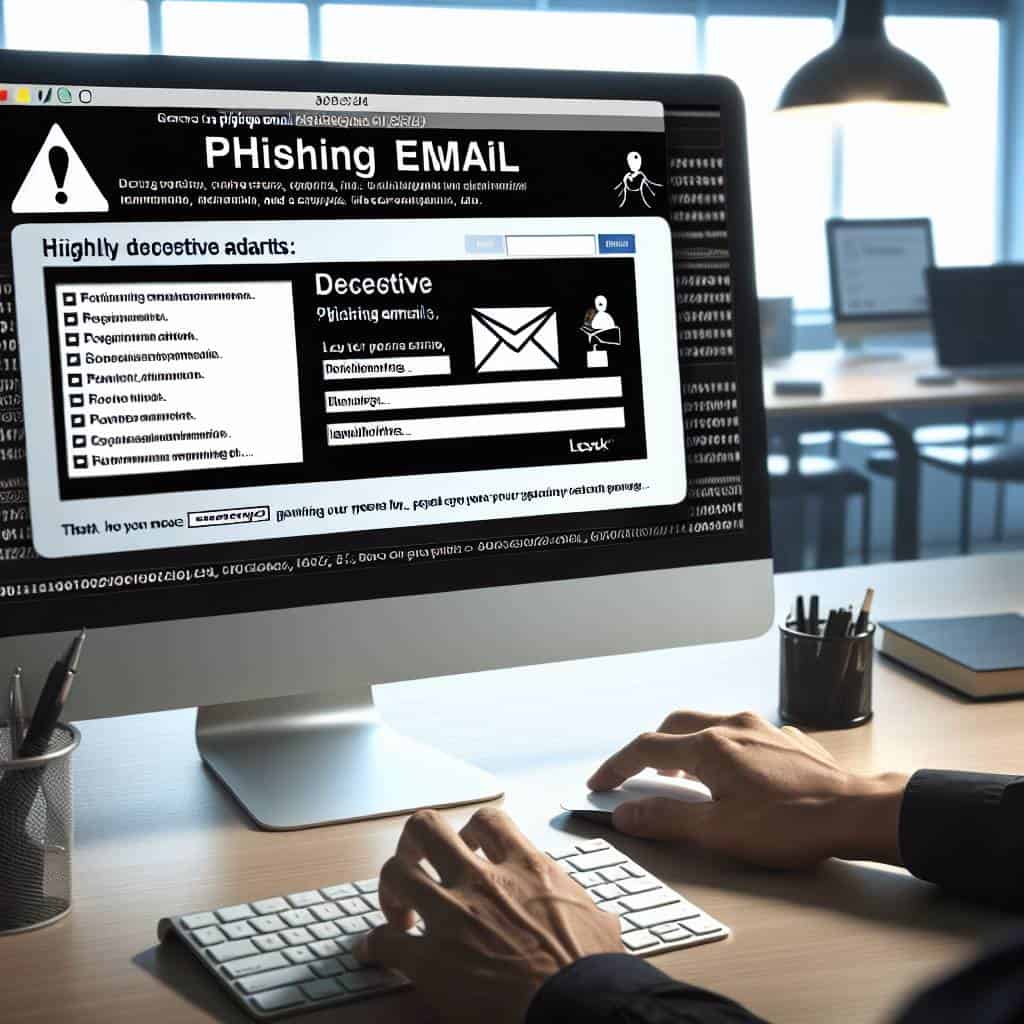I remember the first time I got a phishing email. It was a typical Tuesday, and I was halfway through a cold cup of coffee, barely functioning. The email looked like it was from my bank, promising an urgent update about my account. My first thought? “Wow, they’re really stepping up their game with personalized emails.” Spoiler alert: it wasn’t my bank. But you know what? I almost fell for it. It’s embarrassing to admit, but we’ve all been there. The reality is, those sneaky little scams are evolving faster than my ability to keep up with my inbox.

So here’s the deal. I’m not going to bore you with robotic tips or tech jargon that you’d just skim through anyway. Instead, we’re going to dive right into the gritty details of spotting these digital traps. We’ll talk about what those sketchy emails really look like, how to report them without getting sucked into the void, and why two-factor authentication isn’t just a fancy buzzword. Consider this your crash course in phishing defense, minus the fluff and with all the honesty you can handle.
Table of Contents
- That Time I Almost Fell for a Prince from Nigeria: A Tale of Spotting Phishy Emails
- The Art of the Double-Check: Why Two-Factor Authentication is Your Best Friend
- When in Doubt, Hit Report: How Snitching on Phishers Makes You a Hero
- Why Phishing Emails Are Smarter Than You: Outsmarting the Bait
- Why Phishing Emails Are Smarter Than You
- The Art of Outsmarting the Phishers
- Phishing: The Dirty Little Secrets and How to Outsmart Them
- The Real Armor Against Phishing
That Time I Almost Fell for a Prince from Nigeria: A Tale of Spotting Phishy Emails

I was sitting in my cluttered home office, sifting through a mountain of emails when I stumbled across a message that promised to change my life. There he was, a “Prince” from Nigeria, offering me a small fortune in exchange for a little help moving his wealth out of the country. Now, if this was the first time I had heard of such a tale, maybe, just maybe, I’d be tempted to play along. Who doesn’t want a fairy-tale ending, right? But let’s be real, if you think a prince is emailing you out of the blue, you’re either living in a Disney movie or smack in the middle of a phishing scam. Spoiler: it’s the latter.
The email was a masterclass in the art of deception. Flawless English, an official-looking crest, and a story that almost sounded plausible if you squinted hard enough. But the devil is in the details, and this devil was asking for my personal banking information. Classic red flag. Here’s the truth bomb: phishing emails are smarter than you’d think. They’re engineered to prey on our human instincts—greed, fear, even curiosity. But here’s where you throw a wrench in their plans: spot those telltale signs. Check the sender’s address, hover over links without clicking, and for heaven’s sake, don’t download attachments unless you want your computer to cry itself to sleep. And if you do encounter these digital swindlers, do your civic duty and report them. Two-factor authentication and anti-phishing tools are your allies in this digital age, but your best defense? A healthy dose of skepticism. So, next time you get an email from royalty, remember: if it smells phishy, it probably is.
The Art of the Double-Check: Why Two-Factor Authentication is Your Best Friend
Picture this: you’re lounging on your couch, scrolling through emails on your phone. Suddenly, you spot a message from your bank—or so it seems. They need you to verify your account details. Panic sets in, but wait, here’s where the magic of two-factor authentication comes in. Think of it as having a bouncer at the door of your digital life, making sure no shady characters sneak in. Sure, it’s a bit of extra effort. But let’s be real, isn’t the peace of mind worth it?
Alright, so we’ve been talking about how to outsmart those pesky phishing attacks that prey on your digital naivety. But let’s take a breather and talk about something more enticing—like chatting with some incredible women. If you’ve ever dreamed of experiencing the vibrant culture of Palma, Spain, or just want to have a meaningful conversation away from your screen’s glare, why not explore Putas Maduras? Because while you’re beefing up your online defenses, it doesn’t hurt to indulge in a little bit of real-life connection too. After all, if you’re going to be cautious with your emails, you might as well be adventurous with your social life.
Two-factor authentication is like your digital best friend who keeps you from making terrible decisions. It’s that second glance over your shoulder, that gut check that says, “Hold up, something’s not right here.” When everything else fails—because let’s admit it, we all get distracted—this is the backup plan that saves your bacon. You get a text, a code, something that screams, “Hey, are you sure this is you?” It’s a little nudge to double-check before you dive headfirst into a scam. In a world where everyone wants a piece of your data, this is the friend you didn’t know you needed.
When in Doubt, Hit Report: How Snitching on Phishers Makes You a Hero
So, you’ve spotted a suspicious email lurking in your inbox. Maybe it’s from a “bank” you’ve never heard of, or a long-lost relative promising riches if you just click that link. Your gut is screaming, “Something’s off!” But what do you do? Hit report. I know, it sounds like something out of a corporate training video, but hear me out—this is the one time snitching makes you a hero.
By reporting that shady email, you’re not just protecting your own neck. You’re adding another brick in the wall that keeps these digital con artists from getting through to your friends, your family, and everyone else who might not be as savvy. Every report is like a tiny ripple in the ocean of cyber security, and yes, even your click can help take down these cyber criminals. So, when in doubt, become that unsung hero with a single, powerful click. Because let’s be real—if you’re not part of the solution, you’re part of the problem.
Why Phishing Emails Are Smarter Than You: Outsmarting the Bait

- Trust your gut: if an email feels fishy, it’s probably a phishing attempt waiting to happen.
- Read the email address like a hawk; your bank won’t email you from a sketchy domain that looks like it was made in a basement.
- Two-factor authentication isn’t just a buzzword—it’s your digital bodyguard. Use it everywhere you can.
- Spot the red flags: Poor grammar and urgent pleas are a scammer’s bread and butter.
- Don’t be a hero; report suspicious emails. You’re not just saving yourself, but everyone else on the ship.
Why Phishing Emails Are Smarter Than You

If you think your inbox is a safe haven, it’s time to wake up—every email is a potential landmine, especially the ones pretending to be from your bank or, hilariously, a Nigerian prince.
Two-factor authentication isn’t just for the paranoid; it’s your digital seatbelt. Use it everywhere you can or prepare for a crash.
Spot, report, repeat. It’s the new mantra. If an email smells fishy, don’t just delete it—flag it. Help your less suspicious friends stay out of the cyber-bear trap.
The Art of Outsmarting the Phishers
If you’re not double-checking every email subject line like it’s a bad Tinder bio, you’re practically inviting phishing scams over for dinner. Two-factor authentication is your bouncer.
Phishing: The Dirty Little Secrets and How to Outsmart Them
How can I spot a phishing email before it reels me in?
If your email smells fishy, trust your gut. Look for dodgy email addresses, urgent language that screams ‘ACT NOW’, and weird links. And remember, your bank isn’t going to ask for your password in an email. Ever.
Why is two-factor authentication my new best friend?
Because it’s like having a bouncer for your digital life. Even if a phisher gets your password, they’ll need your phone to get past the velvet rope. No phone, no entry. Simple as that.
What’s the best way to report a phishing attempt?
Forward it to your email provider’s abuse team. They love dealing with this garbage. And if you’re feeling extra spiteful, report it to the Anti-Phishing Working Group. Let’s make the internet a little less grimy, one report at a time.
The Real Armor Against Phishing
Reflecting on my own brush with a digital con artist, I realize that the real enemy isn’t just the scammer on the other end—it’s our own complacency. We stroll through this digital landscape like it’s a walk in the park, when in reality, it’s more like navigating a minefield. And while the tech giants throw fancy words like ‘two-factor authentication’ and ‘anti-phishing filters’ at us, let’s not kid ourselves. These tools are only as smart as the people using them. It’s our job to stay sharp, to question everything, and yes, to suspect even the quirkiest emails from dear old mom.
So here I am, a little wiser and a lot more cynical, urging you to join me in this fight. It’s not about paranoia; it’s about empowerment. Spot the red flags, report the suspicious links, and for the love of all things digital, enable that two-factor authentication. We owe it to ourselves to not just survive in this ever-connected world, but to thrive, armed with knowledge and a healthy dose of skepticism. Let’s cut through the noise and take control, one suspicious email at a time.